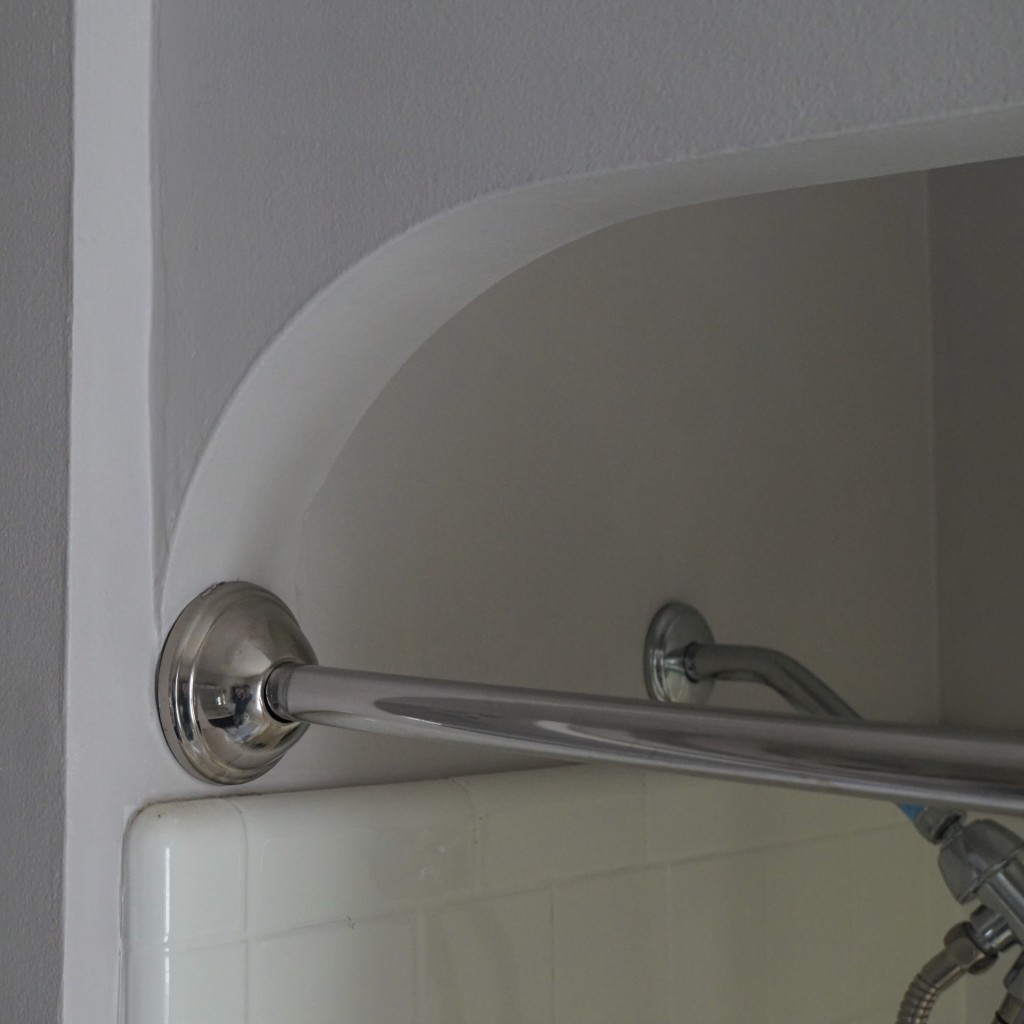
In this 1940s house there are arches leading into living room, this overhanging shower divider, and the stairs leading up. Curved corners are a recurring architectural feature here. Depending on the lighting and one’s frame of mind the very same spot can stand out for belonging to the wall (extending and completing the edge work) or else belong to the empty space by which one passes between rooms. This mental acrobatics is something like the “glass half-empty versus glass half-full” famous example. There is also the well-known psychological experiment in black and white showing what some viewers recognize as 2 persons’ heads in silhouette, but where others see a vase, instead.
With reference to the photographic theme of this blog, examples can be found in which emphasis or interpretation or sense of main subject can differ greatly in one person’s eyes compared to another’s. A simple example is a landscape scene with a bird or a plane visible in the sky overhead. To a person who loves landscape the details in the sky may be of secondary importance, adding a small counterpoint to the main point of the picture. But to a person keen on birds or aircraft, perhaps the meaning is reversed: it is the flying thing that merits attention. The landscape is merely a place in which the important thing is recorded. But in the photo of the arched corner of this shower, the visual phenomenon at hand is “relatedness”: does the curve belong to the space by which a person gets in and out of the shower? Or does the curve belong to the builder’s idea of graceful architectural structure? The same distinction occurs in the place where perpendicular walls meet the floor or the ceiling. The “corner” is both a space and a physical structure at the same time. Strictly speaking, there is no need to declare that all corners are a physical fabric; or the reverse, that all corners are known by the absence of any other structure. This “both/and” way of appreciating the smooth arch in this photo is the best answer to the question: does an arch consist of space or does it consist of curving material.
In the wider world of lived experience, too, there are surely may instances of “both/and.” A single hair on one’s head is both living (the follicle) and dead (the shaft and lengthening end). An adult can be both a child and a parent. A bout of summer rain can be both life-giving to the dry landscape and life-taking for worms drowned by precipitation beyond a certain amount. The combination of sweet and sour are a proven taste, as is bitter and sweet, or salty and sweet. In these flavor illustrations, each contrasting element contributes to the perception of the other: all sweet soon dulls the mouth, but when accented by salt or by sourness, then the combination triggers compounding of tastes. Just as the shower arch in the photo gains its elegance by wall and by adjacent air, so also in much larger things in life is there a way in which a subject is partly defined by its absence – the edges where it is not.
